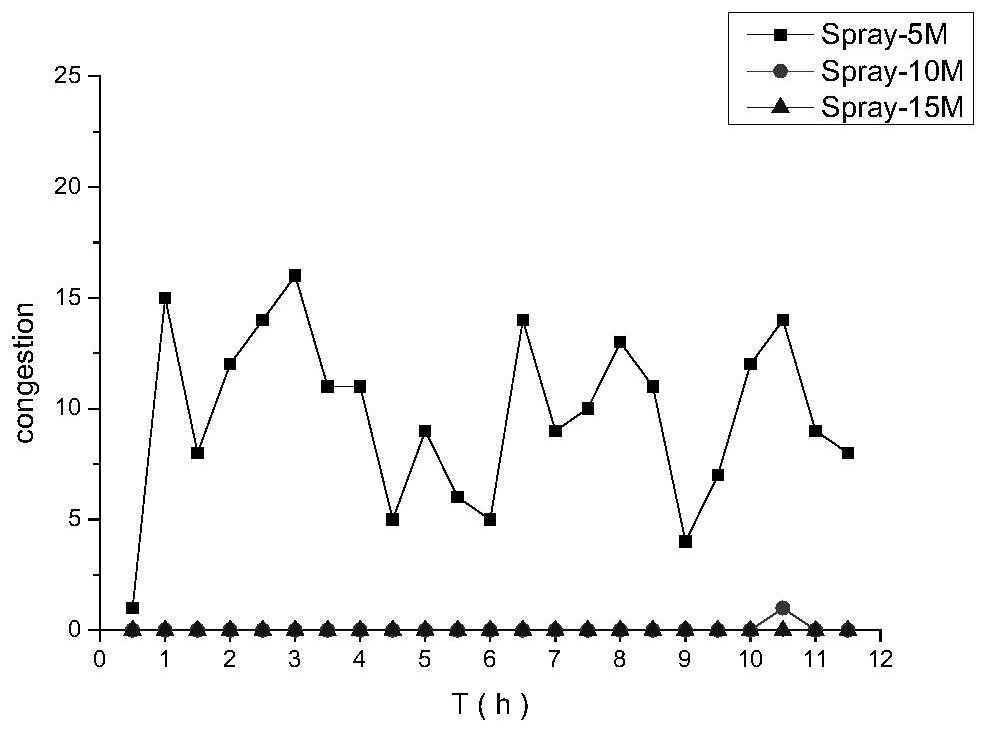An opportunistic network congestion control method based on forwarding task migration
A control method and network congestion technology, applied in network traffic/resource management, wireless communication, transmission system, etc., can solve problems such as difficult to predict, delay node survival time, discard data, etc., to predict and avoid congestion, reduce congestion Risk, effect of effective congestion
- Summary
- Abstract
- Description
- Claims
- Application Information
AI Technical Summary
Problems solved by technology
Method used
Image
Examples
Embodiment Construction
[0069] The present invention will be described in further detail below with reference to the accompanying drawings and specific embodiments.
[0070] The main goal of opportunistic networks is to forward messages with little delay and high success rate. The mechanism of the present invention is as Figure 5 , shown in 6. The opportunistic network involved in the present invention is composed of n mobile nodes moving in a limited area, using radio frequency devices with fixed radio frequency range and communication bandwidth to send and receive data, only when two nodes enter the radio frequency range that can communicate The wireless link performs single-hop transmission; each node has a unique ID number and has the same size of buffer space B S , randomly generate messages of different sizes to any destination node. The "store-carry-forward" mechanism is adopted between nodes to realize message forwarding by relying on the opportunities brought by node movement, and each n...
PUM
 Login to View More
Login to View More Abstract
Description
Claims
Application Information
 Login to View More
Login to View More - R&D
- Intellectual Property
- Life Sciences
- Materials
- Tech Scout
- Unparalleled Data Quality
- Higher Quality Content
- 60% Fewer Hallucinations
Browse by: Latest US Patents, China's latest patents, Technical Efficacy Thesaurus, Application Domain, Technology Topic, Popular Technical Reports.
© 2025 PatSnap. All rights reserved.Legal|Privacy policy|Modern Slavery Act Transparency Statement|Sitemap|About US| Contact US: help@patsnap.com



